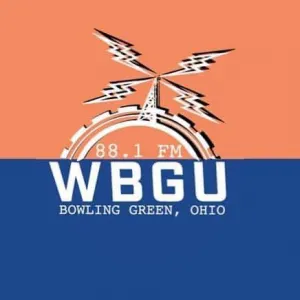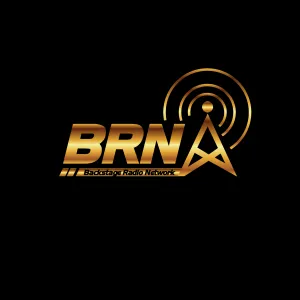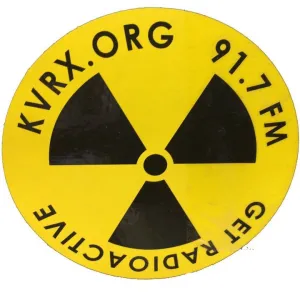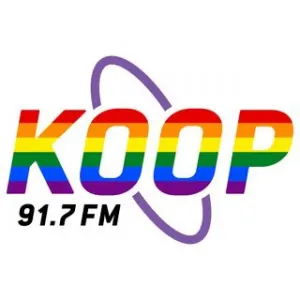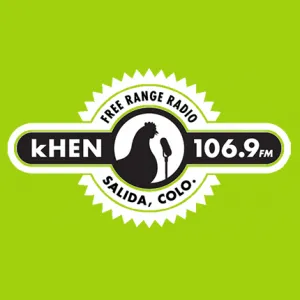Радіо WUML-FM
0
Поділитися
0
0
[
Слухати пряму трансляцію онлайн
]WUML (91.5 FM) is a non-commercial radio station licensed to Lowell, Massachusetts, USA. The station is owned by University of Massachusetts Lowell.
Radio at UMass Lowell was started in 1952 by a student named Ed Bonacci. Bonacci built a receiver for his dorm room stereo system that actually turned out to be a transmitter.
A studio was built in Kitson hall and the 5-10 watt transmitter located in the basement of the old (Alumni) library. This low power meant the station was not regulated by the FCC, who had issued the callsign. At... Дізнатися більше
Lowell FM|91.5
(978)934-4975
[email protected]
WUML1 University Ave.Lowell, MA 01854
http://www.wuml.org
Перегляди:
0Рекомендовані радіостанції:
WUML (91.5 FM) is a non-commercial radio station licensed to Lowell, Massachusetts, USA. The station is owned by University of Massachusetts Lowell.
Radio at UMass Lowell was started in 1952 by a student named Ed Bonacci. Bonacci built a receiver for his dorm room stereo system that actually turned out to be a transmitter.
A studio was built in Kitson hall and the 5-10 watt transmitter located in the basement of the old (Alumni) library. This low power meant the station was not regulated by the FCC, who had issued the callsign. At exactly 7:00 PM on January 15, 1953 WLTI, 550 AM began broadcasting on carrier current over the electrical power wires (not airwaves) to the dorms of the Lowell Textile Institute (now UMass Lowell), specifically to Eames and Smith Hall, and the Alumni Library on the University's North Campus. It was later discovered that some freak conditions allowed a little airwave leakage down the Merrimac but there were no complaints because the locals said they "liked the programming."
During the summer of 1953 permanent station consoles were built and readied for the move of the studio from Kitson Hall to the basement of Eames Hall which at that time Ed Bonacci remembered, was being used "as a trunk room.
The station funded itself through donations from student government, and by running commercials for local businesses, allowable because they were not regulated by the FCC due to the low power output. WLTI strove to be financially independent at all times.
In the fall of 1963 the station was placed under the control of the AVS (Audio Visual Society) and the Administration became responsible for all station funding, the commercials were abolished and more time could be spent on programming.
On November 26, 1967, at 4:00 PM. WLTI became a licensed and regulated FCC educational FM station broadcasting over air on its current frequency at 91.5 FM, using a transmitter (10 watts) and an antenna, which was capable of reaching Cumnock, Southwick, Leitch, and Bourgeois Halls and a five-mile radius from the transmitter and antenna which were both located in Southwick Hall.
In the early 1970s some of the most famous names in of the era spoke and did live shows from the WLTI studios, Frank Zappa, Cheech and Chong, Jorge Santana and Malo, Jethro Tull and many others performed live from the studios.
During these years, and a bit after the general population, the radio station began to reflect the music and ideals of the counterculture, more than the engineering focus of the University. Still student run, it was one of the voices of student dissent during the day, and the large steel station door to the studios under the library were sometimes locked to prevent campus security from disrupting the station during more controversial airings. Yet throughout this period the student managers stressed one thing - professionalism. DJs were taught to keep the door locked, the language clean, and the logs filed accurately.
In 1969 construction began on new facilities in the basement of Lydon Library, which were opened in 1971. The old studios became the Eames hall Laundry. A 10,000 watt transmitter purchased from WNAC in Boston was discovered to be to large to fit in the new facilities built by the administration, so a smaller 1000 watt transmitter was installed.
But before the more powerful transmitter could be used, a highly directional antenna pattern had to be devised to protect the meager 10 watt station (WPAA 91.7 MHz) at Andover Academy. A significant amount of student and paid consultant effort went into revision after revision to the antenna until it was finally certified for operation.
During the 1973-1974 school year the antenna was delicately moved to the roof of the newly opened 18 story dormitory later named Fox Hall.
The self modulating amplifiers was heard a few rooms away, the carrier current transmitter only in three halls, and a few accidental homes nearby, the 10 watt system hardly seemed to be able to get out of Pawtucketville (despite the 5 mile rating), but the changes in 1973 made WLTI a clear signal from Pawtuccketville to Belvidere and to the surrounding towns.
By 1974 the station had dramatically increased its educational and community service programming, music was still there but as a balanced part of a total package. The station re-invented itself.
But in 1975-1976, an Ad-Hoc community of the university nearly changed the face of radio. It was proposed that the radio station be overseen by a committee including administrators, faculty, community members, and an at-large student elected by the general student body. The committee would aid in determining policy and programming. The idea was dismissed, and WLTI remained student-run. The most significant changes from around this time, however, were the change of the call letters to WJUL, reflecting the newly merged University of Lowell(1975).
On October 15, 2003, the radio station began broadcasting as WUML, finally reflecting the new name for the university (University of Massachusetts Lowell).
Since its formation in 1952, WUML has grown into a large, self-sufficient organization that continues to be entirely student run. The station's active membership is over 50 students as well as 100 additional alumni and community members.
Radio at UMass Lowell was started in 1952 by a student named Ed Bonacci. Bonacci built a receiver for his dorm room stereo system that actually turned out to be a transmitter.
A studio was built in Kitson hall and the 5-10 watt transmitter located in the basement of the old (Alumni) library. This low power meant the station was not regulated by the FCC, who had issued the callsign. At exactly 7:00 PM on January 15, 1953 WLTI, 550 AM began broadcasting on carrier current over the electrical power wires (not airwaves) to the dorms of the Lowell Textile Institute (now UMass Lowell), specifically to Eames and Smith Hall, and the Alumni Library on the University's North Campus. It was later discovered that some freak conditions allowed a little airwave leakage down the Merrimac but there were no complaints because the locals said they "liked the programming."
During the summer of 1953 permanent station consoles were built and readied for the move of the studio from Kitson Hall to the basement of Eames Hall which at that time Ed Bonacci remembered, was being used "as a trunk room.
The station funded itself through donations from student government, and by running commercials for local businesses, allowable because they were not regulated by the FCC due to the low power output. WLTI strove to be financially independent at all times.
In the fall of 1963 the station was placed under the control of the AVS (Audio Visual Society) and the Administration became responsible for all station funding, the commercials were abolished and more time could be spent on programming.
On November 26, 1967, at 4:00 PM. WLTI became a licensed and regulated FCC educational FM station broadcasting over air on its current frequency at 91.5 FM, using a transmitter (10 watts) and an antenna, which was capable of reaching Cumnock, Southwick, Leitch, and Bourgeois Halls and a five-mile radius from the transmitter and antenna which were both located in Southwick Hall.
In the early 1970s some of the most famous names in of the era spoke and did live shows from the WLTI studios, Frank Zappa, Cheech and Chong, Jorge Santana and Malo, Jethro Tull and many others performed live from the studios.
During these years, and a bit after the general population, the radio station began to reflect the music and ideals of the counterculture, more than the engineering focus of the University. Still student run, it was one of the voices of student dissent during the day, and the large steel station door to the studios under the library were sometimes locked to prevent campus security from disrupting the station during more controversial airings. Yet throughout this period the student managers stressed one thing - professionalism. DJs were taught to keep the door locked, the language clean, and the logs filed accurately.
In 1969 construction began on new facilities in the basement of Lydon Library, which were opened in 1971. The old studios became the Eames hall Laundry. A 10,000 watt transmitter purchased from WNAC in Boston was discovered to be to large to fit in the new facilities built by the administration, so a smaller 1000 watt transmitter was installed.
But before the more powerful transmitter could be used, a highly directional antenna pattern had to be devised to protect the meager 10 watt station (WPAA 91.7 MHz) at Andover Academy. A significant amount of student and paid consultant effort went into revision after revision to the antenna until it was finally certified for operation.
During the 1973-1974 school year the antenna was delicately moved to the roof of the newly opened 18 story dormitory later named Fox Hall.
The self modulating amplifiers was heard a few rooms away, the carrier current transmitter only in three halls, and a few accidental homes nearby, the 10 watt system hardly seemed to be able to get out of Pawtucketville (despite the 5 mile rating), but the changes in 1973 made WLTI a clear signal from Pawtuccketville to Belvidere and to the surrounding towns.
By 1974 the station had dramatically increased its educational and community service programming, music was still there but as a balanced part of a total package. The station re-invented itself.
But in 1975-1976, an Ad-Hoc community of the university nearly changed the face of radio. It was proposed that the radio station be overseen by a committee including administrators, faculty, community members, and an at-large student elected by the general student body. The committee would aid in determining policy and programming. The idea was dismissed, and WLTI remained student-run. The most significant changes from around this time, however, were the change of the call letters to WJUL, reflecting the newly merged University of Lowell(1975).
On October 15, 2003, the radio station began broadcasting as WUML, finally reflecting the new name for the university (University of Massachusetts Lowell).
Since its formation in 1952, WUML has grown into a large, self-sufficient organization that continues to be entirely student run. The station's active membership is over 50 students as well as 100 additional alumni and community members.
© LogFM.com, 2009-2025 (2025-12-14,17:22:43)
